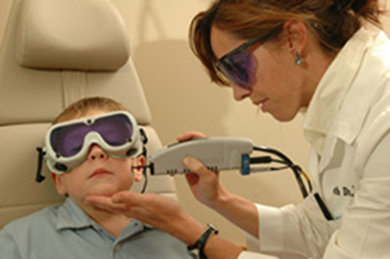Most hemangiomas are not visible at birth, but they often begin to appear during the first four to six weeks of a child's life. All skin hemangiomas will be visible by 6 months of age. They may occur anywhere on the skin surface, but they are most common on the scalp, face and neck. Many first appear as a small bruise, scratch or a tiny red bump. But unlike other types of birthmarks, they will grow and change quickly during your child's first few months.
What Do Hemangiomas Look Like?
Hemangiomas can occur anywhere on the skin, including, rarely, in the organs of the body. Most often, hemangiomas grow on the skin of the head or neck.
There are three general types of infantile hemangiomas:
- Superficial hemangiomas, which occur on the outer layers of the skin, are typically bright red to purple in color.
- Deep hemangiomas, which grow under the skin in the fat, may be blue, purple or even skin color (if they are deep enough under the skin surface).
- Mixed hemangiomas are the most common type of hemangioma. These hemangiomas have both superficial and deep components.
Shape, Size and Growth Rate
Most hemangiomas are round or oval in shape, but larger lesions may follow the shape of the affected body part.
The size of hemangiomas varies. Some are very small (1 mm), while others are very large (20 cm or larger).
Every hemangioma differs in how fast it grows and how long it grows before it stops.







 Treatment options for infantile hemangiomas include:
Treatment options for infantile hemangiomas include: